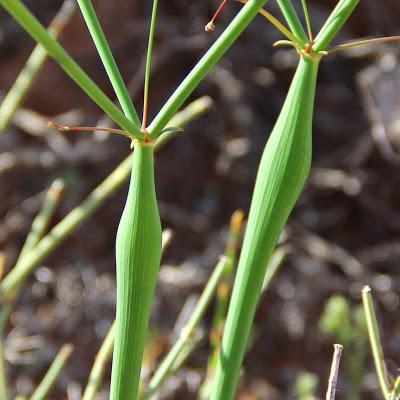 There are many many wild buckwheats – on the order of 450 species, subspecies and varieties. They’re native to North America and reach their greatest diversity here in the American West (e.g. 200+ in California alone). I should be proud, but instead I avoid them because they’re notoriously hard to tell apart. Even the acknowledged expert, JL Reveal, agrees with me:
There are many many wild buckwheats – on the order of 450 species, subspecies and varieties. They’re native to North America and reach their greatest diversity here in the American West (e.g. 200+ in California alone). I should be proud, but instead I avoid them because they’re notoriously hard to tell apart. Even the acknowledged expert, JL Reveal, agrees with me:“Species of Eriogonum [wild buckwheats] have long been regarded as among the most difficult in North America to distinguish” (source).But there’s one wild buckwheat that’s among the easiest plants to distinguish, even though its flowers look pretty much like those of other wild buckwheats …
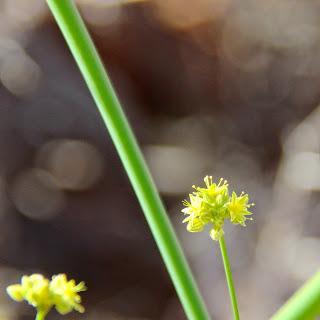
Tiny yellow flowers.
… and the leaves are hardly distinctive.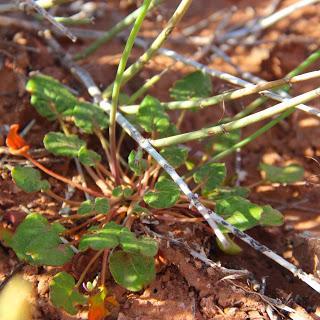
Rosette of basal leaves.
Yet even at a distance we can recognize it …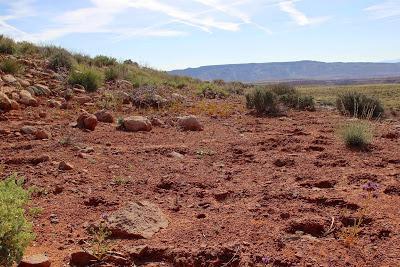
Click on image to view plant in center of photo.
… by its stems!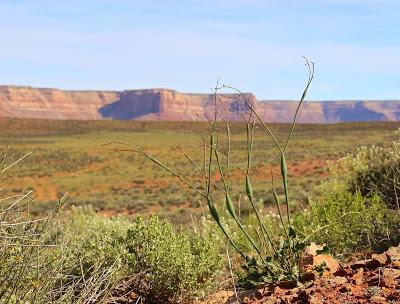 It’s the … FANFARE!!! … desert trumpet, Eriogonum inflatum. The photogenic inflated stems and branches give it away.
It’s the … FANFARE!!! … desert trumpet, Eriogonum inflatum. The photogenic inflated stems and branches give it away.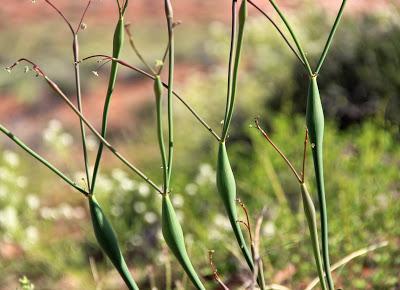
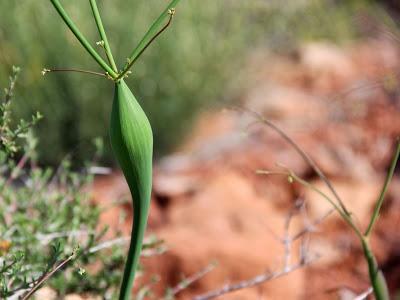
Swollen main stems may be an inch across.
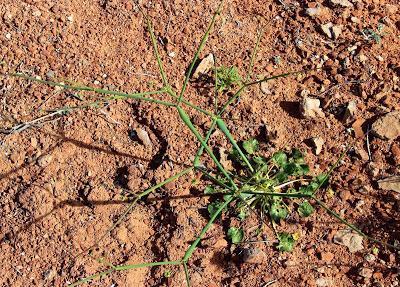
Looking down into the very open spreading inflorescence (flower “cluster”).
Desert trumpet grows in Arizona, southern and east-central California, western Colorado, northwestern New Mexico, central and southern Nevada, southern and eastern Utah, Baja California and Sonora. It does well on harsh arid sites (source).
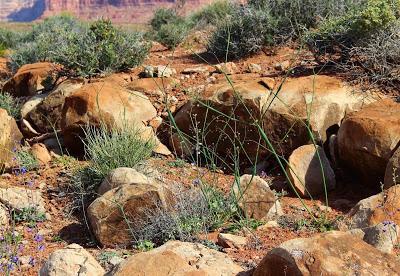
Desert trumpet in a rock garden in southeast Utah. Plants are close to two feet tall. Blue flowers belong to desert larkspur (Delphinium).
Once upon a time someone found insect eggs in stems of desert trumpet, and speculated that the hollow swellings were abnormal growth caused by insects. Speculation became knowledge, which persists in spite of efforts to get rid of it (read more here, here and here). Insects sometimes lay eggs in the inflations, but plants grow them even where there are no insects – in labs for example.Inflated stems are a boon to photosynthesis. They store carbon dioxide (unless insects drill holes to ventilate their nurseries), and provide up to 75% of a plant’s photosynthetic surface. Even better, stems and branches remain green and photosynthetically active into summer, after the leaves have wilted (Waring 2011).Some desert trumpet plants do not have inflated stems. “… this feature is partly a function of available moisture: the drier the conditions, the less pronounced the inflation. Stems produced in the summer tend to be inflated less frequently than those produced in the spring” (source). Non-inflated stems were the basis for an old variety that’s no longer recognized. Too bad, it had a neat name: Eriogonum inflatum var. deflatum.By fall the stems have dried and turned brown, but they usually stay on the plant for at least another year. You can take a dried stem and slice off half of the inflated part lengthwise to make a pipe, as some Indians did. This is why desert trumpet is also known as Indian pipeweed. Another name is bottle stopper.
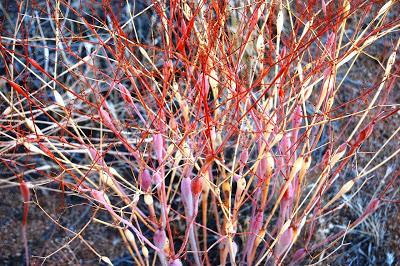
Desert trumpet/Indian pipeweed/bottle stopper in fall (pale stems are a year older). Source.
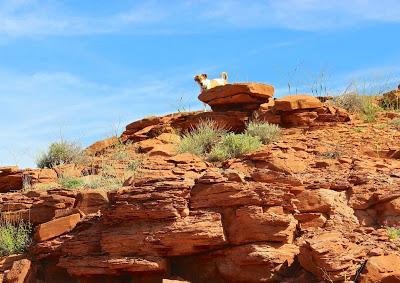
Emmie found desert trumpets on the crest of this small ridge north of Goosenecks State Park.
Sources (in addition to links in post)Clarke, C. 2013. One of the oddest flowers: desert trumpet. KCET.orgSchneider, A. Eriogonum inflatum (desert trumpets) in WILDFLOWERS, FERNS, & TREES of Colorado, New Mexico, Arizona, & Utah [online]. Accessed May 2015.Waring, GL. 2011. A natural history of the Intermountain West; its ecological and evolutionary story. Salt Lake City: University of Utah Press.